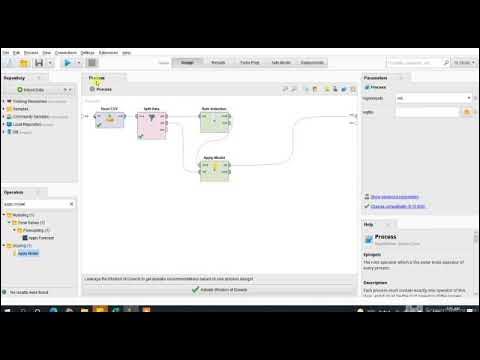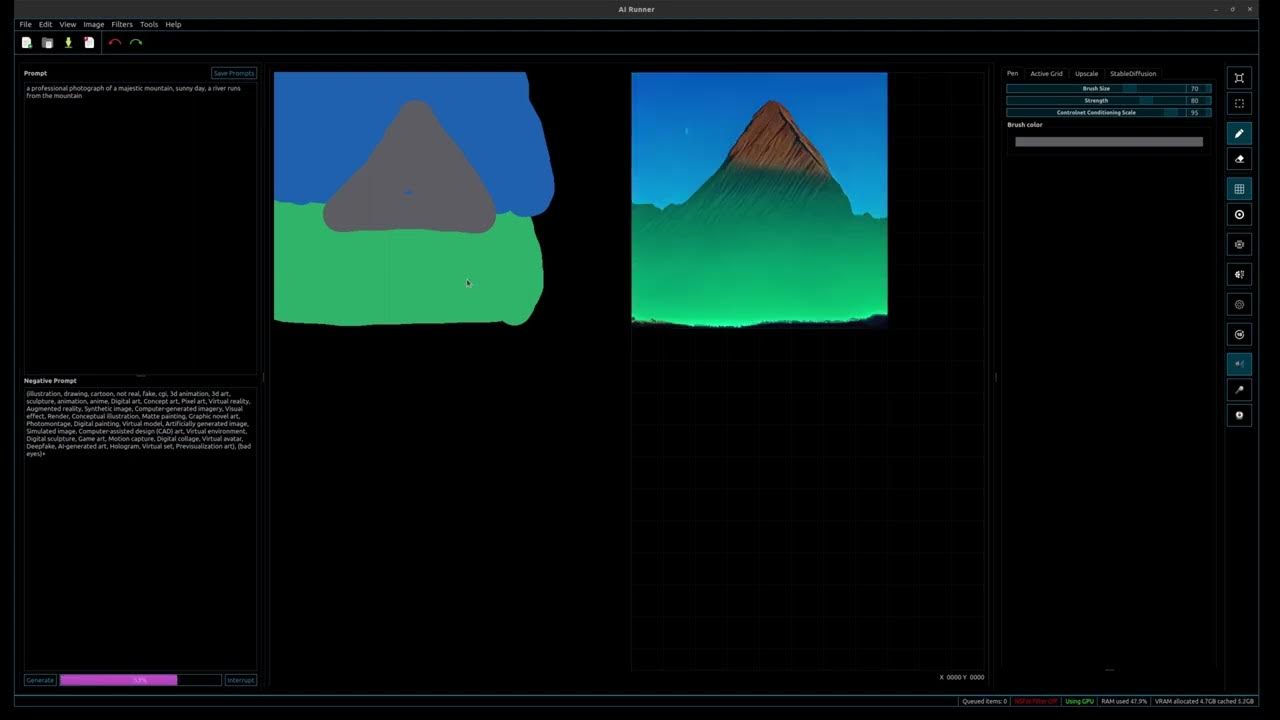Tutorial: Data Mining using Rapid Miner (Basics)
Summary
TLDRIn this demonstration, the presenter utilizes RapidMiner to tackle a classification problem with the Pima Indian Diabetes database. The dataset, comprising 768 instances and eight attributes, aims to predict diabetes status based on various health metrics. After importing the data, the presenter configures the model, employs the Naive Bayes algorithm, and conducts cross-validation. The results show a moderate accuracy of 75.51%, highlighting strengths and weaknesses in positive and negative classifications. This engaging session offers insights into the practical application of machine learning techniques for health data analysis.
Takeaways
- 😀 The demonstration focuses on using RapidMiner for solving a classification problem related to diabetes.
- 📊 The dataset used is the Pima Indian Diabetes Database, which includes 768 instances and 8 attributes.
- 🔍 The target variable indicates whether a person has diabetes, categorized as tested positive or negative.
- 📁 The data is provided in CSV format, having been converted from ARFF.
- 👥 There are 268 instances of diabetes-positive cases and 500 instances of negative cases in the dataset.
- ⚙️ Attributes include factors such as pregnancies, plasma glucose concentration, insulin levels, and age.
- 📈 The data can be visualized through various charts to analyze relationships between different variables.
- 🛠️ A new process is created in RapidMiner to evaluate the model's performance using cross-validation.
- 📉 The Naïve Bayes classification method is employed on the training set to predict diabetes status.
- ✅ The model achieved an accuracy of 75.51%, with a notable confusion matrix highlighting the performance metrics.
Q & A
What is the primary focus of the video?
-The video focuses on demonstrating how to use RapidMiner to solve a classification problem using the Pima Indian Diabetes Database.
What does the Pima Indian Diabetes Database contain?
-The Pima Indian Diabetes Database contains 768 instances and 8 attributes that help determine whether an individual has diabetes.
What is the target variable in the dataset?
-The target variable is the class indicating whether a person tested positive or negative for diabetes.
How was the dataset converted for use in RapidMiner?
-The dataset was converted from ARFF format to CSV format to facilitate easier loading into RapidMiner.
What attributes are included in the dataset?
-The attributes include pregnancy history, plasma glucose levels, skin thickness, insulin levels, body mass index (BMI), pedigree function, and age.
What process is created to evaluate the model?
-A new process is created in RapidMiner for evaluating the classification model using Naïve Bayes, which includes implementing cross-validation.
What is the significance of cross-validation in this context?
-Cross-validation is important as it helps ensure the model's reliability by dividing the data into training and testing sets.
What accuracy did the model achieve?
-The model achieved an accuracy of 75.51%, which indicates that it correctly classified about three-quarters of the instances.
What insights can be derived from the confusion matrix?
-The confusion matrix provides insights into the model's performance, showing the number of true positives, false positives, true negatives, and false negatives, which helps assess its effectiveness.
What are the recall percentages for positive and negative classifications?
-The recall percentage for negative classifications is 83.6%, while for positive classifications, it is only 6.45%, indicating challenges in correctly identifying positive cases.
Outlines

Dieser Bereich ist nur für Premium-Benutzer verfügbar. Bitte führen Sie ein Upgrade durch, um auf diesen Abschnitt zuzugreifen.
Upgrade durchführenMindmap

Dieser Bereich ist nur für Premium-Benutzer verfügbar. Bitte führen Sie ein Upgrade durch, um auf diesen Abschnitt zuzugreifen.
Upgrade durchführenKeywords

Dieser Bereich ist nur für Premium-Benutzer verfügbar. Bitte führen Sie ein Upgrade durch, um auf diesen Abschnitt zuzugreifen.
Upgrade durchführenHighlights

Dieser Bereich ist nur für Premium-Benutzer verfügbar. Bitte führen Sie ein Upgrade durch, um auf diesen Abschnitt zuzugreifen.
Upgrade durchführenTranscripts

Dieser Bereich ist nur für Premium-Benutzer verfügbar. Bitte führen Sie ein Upgrade durch, um auf diesen Abschnitt zuzugreifen.
Upgrade durchführenWeitere ähnliche Videos ansehen

한 때 미국에서 가장 날씬한 민족으로 꼽혔던 ‘피마 인디언족’│아직까지 인디언 밀집지에 살아가는 그들의 충격적인 현재 모습│피마 인디언│다큐프라임│#골라듄다큐

Berkenalan Dengan IDE dan Fitur Rapidminer

Pengenalan Rapidminer dan Representasi Pengetahuan

RapidMiner - Klasifikasi Iris

AI Runner 3.0.0 Development Preview: Draw and generate

L-3.12: Solution of Readers-writers Problem using Binary semaphore
5.0 / 5 (0 votes)
